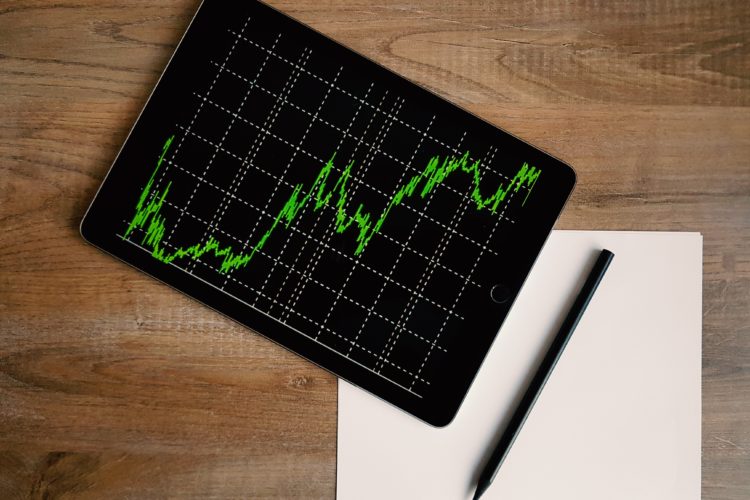Today, the DJIA fell almost 3,000 points, ending the day at just above 20,000. All the other major market indexes performed similarly. At this point we are down about 33% from the all-time high of 29,568.57, set just a few short weeks ago.
But guess what? In all likelihood, your accounts are not down anywhere near as much as the stock markets.
A client called today, not because they were scared—more like concerned. They’d been hearing friends talk about bailing out of the stock market, and they wondered where they stood and what I thought. I checked on their portfolio, which contains 80% fixed income and 20% stocks, and found that it was, in fact down—by 8.9%.
Situations like today’s market are exactly why your portfolio is intentionally structured with diversification and proper asset allocation. You have a broadly diversified portfolio that reflects your risk tolerance, stage of life, and goals so that your asset values are not reflected in the 33% drop in value of the Dow. Because my thriving retiree clients—and all my clients, in fact—have a healthy percentage of holdings in fixed-income investments, a large portion of your portfolio is shielded from the dramatic fall in stock prices we saw today. This is the beauty of keeping a mix of fixed-income investments along with equities: it limits the downside risk during market selloffs. Because you have a properly diversified portfolio, you also won’t have as far to go to return to profitability when the markets make their inevitable turn. This is why I insist, over and over again, “Stay Diversified, Stay YOUR Course”: because it works.
Here’s another thing that works: the steady “drip” from interest and dividends on your investments. No matter what the market does, your income remains largely unaffected. This is why I teach you to “live off the drip”: you can maintain your desired lifestyle—even when the markets are disruptive.
We often compare the stock market to a rollercoaster ride, and with good reason. It’s slow and gradual going up, but when it starts to drop, your stomach turns flips. But what do you think would happen if you tried to jump off the rollercoaster while it’s still moving? Instead, the best way to stay safe on a rollercoaster is to stay strapped in: “Keep your seatbelt securely fastened until the ride has come to a complete stop.”
For sure, we are in a nerve-wracking period of volatility right now. We’re all facing personal uncertainty as well, as we wonder whether we or someone we love will become ill. All of this makes it hard to control our emotions. But when it comes to your investments, your emotions are usually your worst enemy.
Remember, the markets will keep going. In fact, the volatility we are seeing right now is actually a sign that the markets are doing what they always do: translating rapidly unfolding information into stock prices. Market volatility is a natural part of investing; it’s why you have a carefully diversified portfolio that reflects your risk tolerance. So, instead of trying to jump off the rollercoaster, why not focus on some time- and research-tested ways of responding to market volatility? Here are three good things to remember as the markets swoop and dive.
- We have survived similar events before. It seems as if we’ve been getting a disease scare every few years: In 2002 it was SARS, in 2009 it was H1N1; in 2012 it was MERS. Each time, the markets reacted to the uncertainty. There were markets before COVID-19, and there will be markets after COVID-19 is in the rearview mirror. We just need to listen to the CDC, the WHO, and other informed authorities and all do our part. Wash your hands, work from home or stay at home if you can, order takeout instead of going to eat at a restaurant, and, as the President advised today, avoid crowds of 10 or more if at all possible. If we all maintain good hygiene and follow public health guidelines, this virus will peak and decline here, just as it is already doing in China, where it started. When it does, we will see the markets turn around, as they always have.
- For every seller, there’s a buyer. Markets exist to bring buyers and sellers together. Every time a share of stock is sold, a buyer believes that purchasing that share at that price represents an opportunity to make a profit in the future. People who bought stocks today did so expecting to make money.
- Investing decisions based on emotion are usually wrong. Panic and adrenaline are useful when you’re trying to outrun a predator, but your best defenses in a volatile market are logic and calm. Research proves it time and again: emotional reactions to market swings do not advance your long-term financial goals.
If you have questions or concerns, you know I’m always here for you. You can email me at kimberly@empyrionwealth.com.
In the meantime:
Stay Diversified, Stay YOUR Course!
And don’t forget our new mantra:
Stay Your Social Distance, Wash Your Hands!

